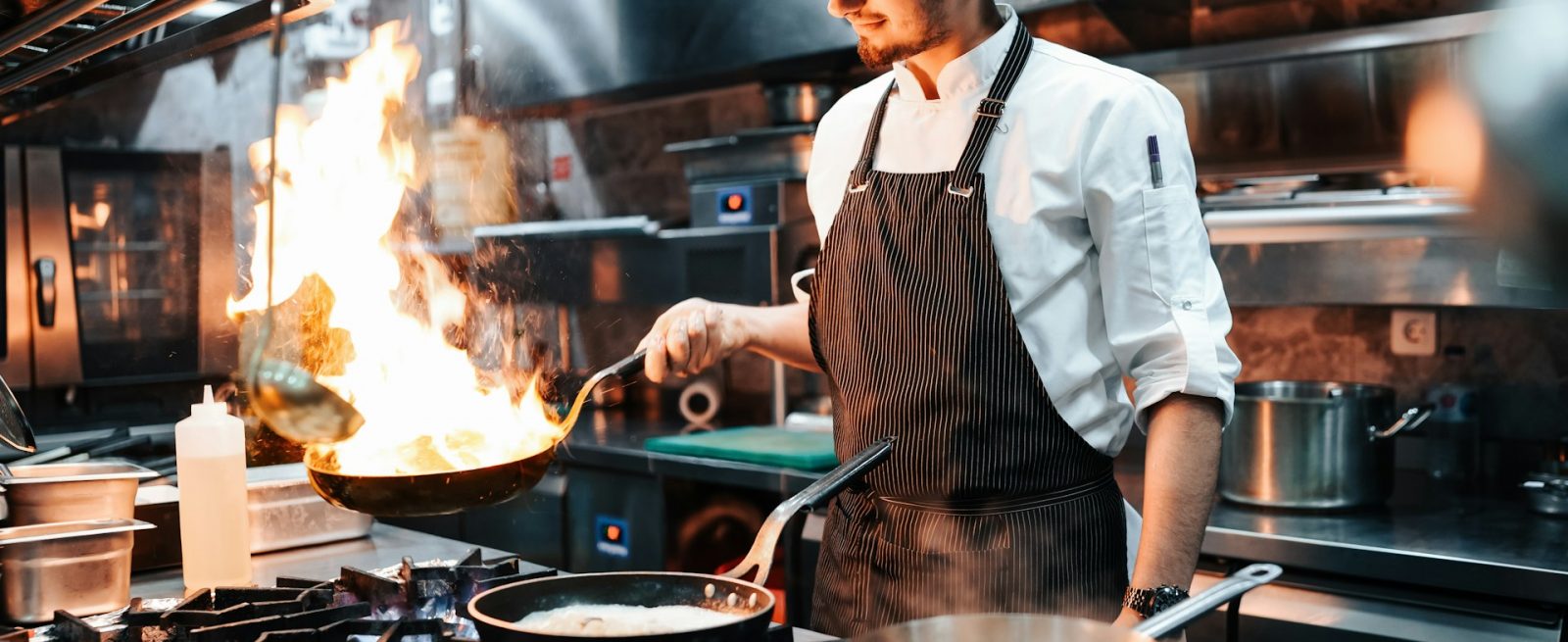Fire Prevention Week 2025 – How to Protect Your Restaurant
3 Min Read By Society Insurance
As a result of the Great Chicago Fire that killed 250 people in 1871, the National Fire Protection Association has declared the public observance of Fire Prevention Week since 1922, marking more than 100 years of the public observance. The holiday was later cemented by President Coolidge, marking the longest-running public health and safety observance on record.
This year, Fire Prevention Week runs from Sunday, October 5 through Saturday, October 11. In 2022, local fire departments responded to an estimated 1.5 million fires in the U.S, and the property damage caused by these fires was estimated at $18 billion.
The latest data shows that 8,000 fires break out at restaurants every year. At restaurants, the #1 time for fires is on Saturday or Sunday mornings at 10 a.m., according to the National Fire Protection Association. Cooking equipment accounts for 61% of fires, followed by electrical/lighting equipment, then HVAC systems, followed by cigarettes, then arson.
Society Insurance has been working alongside business owners for more than a century, seeing first-hand the devastating effects a fire can have on the establishments that make communities great. Amid this year’s Fire Prevention Week, Society Insurance has put together top tips for hospitality businesses to better protect their building, staff and patrons.
Make Your Alarm System Work for You
Business owners can lower the chances of large property losses or even a total loss of their business with a better smoke alarm and general alarm system.
A central alarm system has an Advanced Encryption Standard (AES) connection vs. a standard telephone line. AES is a two-way radio transmission wireless alarm communication system that is self-configuring. It is faster than a telephone line and has a built-in backup system. It can use two-way transceivers for communicating data between the control panel located at your business to the central receiver at the monitoring location. Wireless signals can be rerouted around trouble spots with the signal being continuously sent until it is received and an acknowledgement is sent back. AES reduces concern of the telephone line going out, which would disable your monitoring system. Plus, AES systems are usually more cost effective and cheaper than telephone line communication. Your AES system should be National Fire Protection Association (NFPA) compliant and UL approved.
The Best Offense Is a Defensive Kitchen
Cooking equipment is probably the most important thing inside a restaurant and/or bar – and it’s also a leading cause of fires. These fires are often due to failed, aging equipment; improper installation and maintenance; poor cleaning practices; and inattentive or careless use. Restaurant owners can mitigate these risks by hiring qualified professionals for installation, maintenance, and cleaning service. Additionally, they can train employees on proper cleaning, frequency intervals and safety procedures.
When it comes to your expensive equipment, don’t take shortcuts. Get your equipment serviced regularly by an experienced technician. Take a hard look at your systems and procedures and make changes as necessary to ensure your staff, customers and business stay safe.
Don’t Let Your Rags be a Drag
Rags are handy for cleaning up cooking oil and grease residue, but they also present a severe fire hazard. Use only commercial-grade appliances and detergents to clean grease-laden linens and rags. Store clean and dirty rags separately in metal cabinets or containers with closing lids. Even clean linens and rags have some amount of grease and oil residue that could cause spontaneous combustion.
Step Away from Flaming Shots
In addition to severe skin burns from holding hot glassware and cuts from fractured glassware, flaming drinks can spill or crack onto combustible surfaces. Additionally, it’s not out of the question that patrons could add more alcohol to the flaming drink, causing fire to spread. Tempting as it might be, this gimmick designed to bring in business may be the end of your bar entirely.
Class K Gets the A
Even though the classic red ABC fire extinguisher may be able to temporarily put out a grease fire, a class K fire extinguisher with its wet chemical agent will help keep the fire from reigniting. Silver class K fire extinguishers are meant exclusively to handle kitchen grease fires. They utilize a foam-forming agent that prevents persistent kitchen fires from reigniting. Most commercial cooking installations require a fixed fire suppression system that must be certified UL 300 and regularly serviced by a qualified contractor. To provide both fixed and portable fire suppression, a Class K portable fire extinguisher must also be installed and visible. Train all staff on their use.
“FIRE!” is one word no one wants to hear in a hospitality business, and it is the call in the night that owners and managers never want to receive. Reduce the risk and mitigate damage by ensuring you have the best possible alarm system, updating and cleaning your kitchen equipment, 86ing flaming shots, and investing in Class K extinguishers.
This information is provided as a convenience, and it must not be assumed that it has detected all unsafe acts or conditions. This information is not professional advice; it is designed to assist you in recognizing potential safe work problems and not to establish compliance with any law, rule or regulation.


